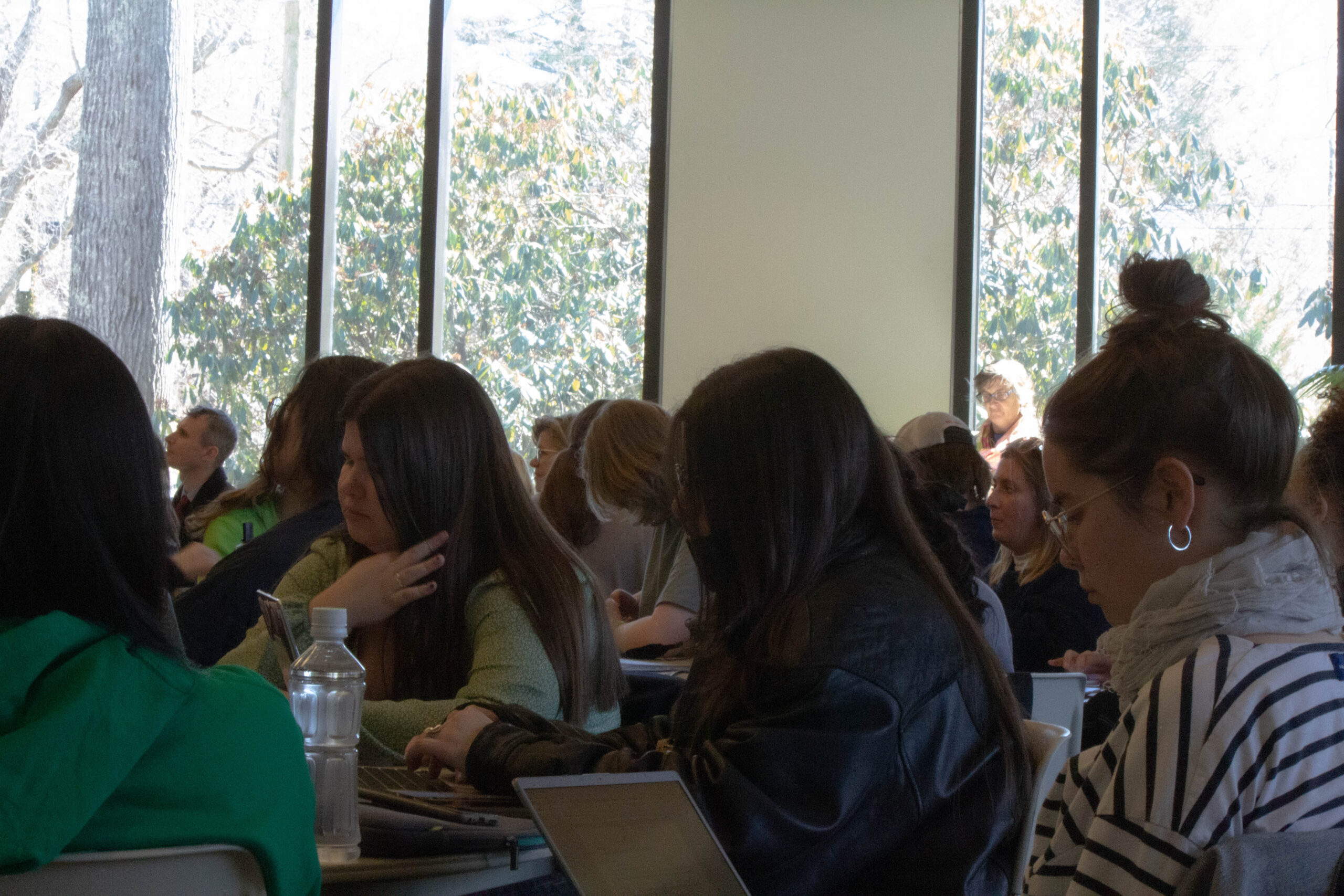How To Be a Media Literate Citizen: “Mind Over Media: a Propaganda and Misinformation Workshop.” PHOTO CREDIT: Maddie Bataille | Photo Editor
Continuing their day-long discussion on misinformation and media literacy, the University of Rhode Island held a workshop titled “Mind over Media: A Propaganda and Misinformation Workshop” this Tuesday.
Ammina Kothari, director of the Harrington School of Communications and Media, began the workshop discussing “fake news” in its different forms.
“Fake information is not news,” Kothari said, “News is not fake. So when we combine those two things, it is kind of reinforcing the misinformation that is out there.”
Kothari hosted the workshop with professor Renee Hobbs, who wrote the book “Mind over Media: Propaganda Information for the Digital Age.” Kothari discussed different types of fake information, which could include anything from satire, which is not meant to be harmful, to fabricated information meant to deceive the public.
She then showed a deepfaked video, a video that has been modified to look as if a subject said something they didn’t, of Ukrainian president Volodymyr Zelensky, with the video analyzing things that proved it was fake, such as his static motion.
“It’s going against everything he’s been saying,” Kothari said, adding that Russian and Ukrainian citizens should look further into it to see what the truth is.
Kothari mentioned that things like this video are used to trick people, like Russian citizens, and that people that are consuming this content should use things like reverse search engines to verify authenticity.
After this, Hobbs stated that the one thing that makes misinformation and disinformation look small due to its vast outreach is propaganda.
Hobbs mentioned that she wrote her book because of her students not believing propaganda was relevant to current issues. She mentioned that many equated it to Nazi Germany and saw it as a thing of the past, with one student even emailing her saying that they were excited as they love learning about history.
Hobbs first showed a video of public service propaganda, showing Lumiere from “Beauty and The Beast” singing a song about wearing masks to the tune of “Be our Guest.” She then had audience members pair up and read different definitions of propaganda and compare them and what stands out the most in the definitions.
The definitions focused on things such as how propaganda goes past the brain and straight to the heart, ignoring all logic, according to Hobbs.
She then followed this up by showing a political cartoon with a boat labeled “NATO” with an American flag leg sleeve, over a line titled Russia and had the room analyze it as well.
“The message appears to be that NATO is threatening Russia,” she said. “It doesn’t say that, but that is one interpretation.”
In addition, Kothari pointed out that the drawing could also be interpreted as NATO stepping off of Russia.
They then showed how to interpret these by asking questions like “Who wrote or drew this?” and “What is its purpose?” In doing so, it was shown that the political cartoon was drawn in a magazine affiliated with the Chinese Communist Party, giving more context to the possible anti- NATO sentiment.
After that, members got into groups and analyzed other pieces of propaganda. Some were tweets, some working as Russian propaganda and others were cartoons.
After analyzing the propaganda, the event ended to prepare for the 5 p.m. event, the keynote speech given by Craig Silverman on “The Global Misinformation Trade.”

